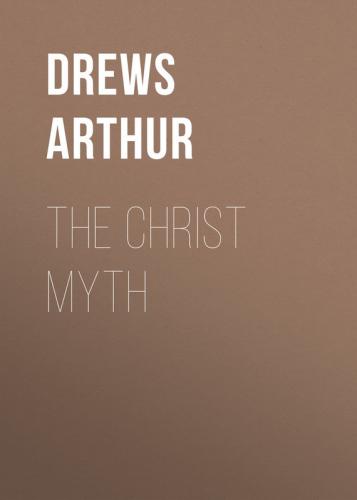13
14
Ep. ad Luc. 41.
15
E. v. Mommsen and Wilamowitz in the
16
It is certain that the old Israelite Jahwe only attained that spiritualised character for which he is nowadays extolled under the influence of the Persians’ imageless worship of God. All efforts to construct, in spite of this admission, a “qualitative” difference between Jahwe and Ahuramazda, as, for example, Stave does in his work (“Der Einfluss des Parsismus auf das Judentum,” 1898, 122
17
Exod. iv. 22; Deut. xxxii. 6; Hosea xi. 1.
18
Isa. xlix. 6, 8.
19
20
Isa. xliv. 28, xlv. 1
21
Cumont, “Textes et monuments figurés relatifs aux mystères de Mithra,” 1899, vol. i. 188.
22
Isa. xi. 65, 17
23
Isa. ix. 6; Micah v. 1.
24
Psa. xlvii. 6, 9, lvii. 12.
25
Ch. xlv.–li.
26
Ch. vi. 1
27
Cf. Gunkel, “Zum religionsgesch. Verständnis des Neuen Testaments,” 1903, p. 23, note 4.
28
Revelation xxii.; cf. Pfleiderer, “Das Urchristentum. Seine Schriften und seine Lehren,” 2nd edit., 1902, vol. ii. 54
29
Dan. xii. 3.
30
The assertion advanced by Grätz and Lucius that the work mentioned is a forgery of a fourth-century Christian foisted upon Philo with the object of recommending the Christian “Ascesis,” and that a sect of Therapeutes never existed, can now be considered disposed of, since its refutation by Massebiau and Conybeare. Cf. Pfleiderer, “Urchristentum,” ii. 5
31
Cf. as regards the Essenes, Schürer, “Geschichte des jüdischen Volkes im Zeitalter Jesu Christi,” 1898, II. 573–584.
32
Regarding the connection between the Essenes and the Apocalypse, cf. Hilgenfeld, “Die jüdische Apokalyptik,” 1857, p. 253
33
On this point, cf. Brandt, “Die mandäische Religion,” 1899; “Realenzyklop, f.d. protest. Theologie u. Kirche,” xii. 160
34
Cf. Hilgenfeld, “Ketzergeschichte des Urchristentums,” 1884.
35
Gunkel,
36
Gen. xxxii. 24.
37
Numb. xx. 16; Exod. xiii. 21.
38
Exod. xxxiii. 14; 2 Sam. v. 23.
39
1 Kings i. 3; Ezek. xliii. 5.
40
Isa. lxiii. 9
41
Psa. ii.
42
Cf. Ghillany, “Die Menschenopfer der alten Hebräer,” 1842, 326–334; Eisenmenger, “Entdecktes Judentum,” 1711, i. 311, 395
43
Exod. xxiii. 20
44
Jos. xxiv. 11.
45
Jos. v. 2–10. The unhistorical nature of Joshua is admitted also by Stade. Stade counts him an Ephraimitic myth, recalling to mind in so doing that the Samaritans possessed an apocryphal book of the same name in place of our Book of Joshua (“Gesch. d. Volkes Israel,” 1887, i. 64
46
That the hypothesis of Smith here mentioned is quite admissible from the linguistic point of view has lately been maintained by Schmiedel in opposition to Weinel (
47
Epiph., “Hæresiol.” xxix.
48
Smith,
49
Isa. ii. 1. Cf. Epiphanius,
50
51
“Enc. Bibl.,” art. “Nazareth.”
52
“Since ha-nosrîm was a very usual term for guardians or protectors, it follows that when the term or its Greek equivalent hoi Nazoraioi was used the adoption of its well-known meaning was unavoidable. Even if the name was really derived from the village of Nazareth, no one would have thought of it. Every one would have unavoidably struck at once upon the current meaning. If a class of persons was called protectors, every one would understand that as meaning that they protected something. No one would hit upon it to derive their name from an otherwise unknown village named Protection” (Smith,
53
Cf. in this connection Smith,
54
Cf. Cumont,
55
Matt. ii. 25.
56
Zech. iii. 10.
57
Jeremias,
58
Robertson, “A Short History of Christianity,” 1902, 9
59
Gunkel,
60
61
Cf. Robertson,
62
Mark v. 27; Luke xxiv. 19; Acts xviii. 25, xxviii. 31.
63
Luke ix. 49, x. 17; Acts iii. 16; James v. 14
